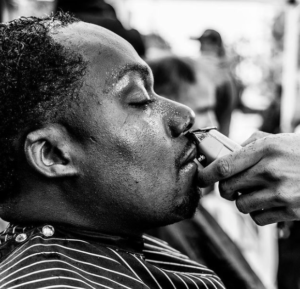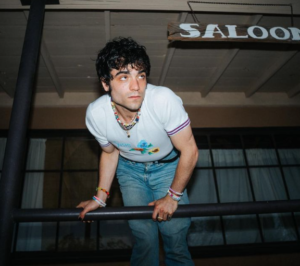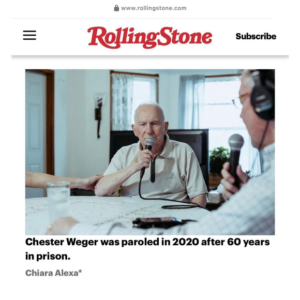To recap where we’ve come from and why this blog series exists - a brief history review and my own thoughts on why NFTs matter:
The Industrial Revolution enabled an increased scale in human organization that facilitated specialization and coordination. Groups of people were brought together in production processes, leading to the rise of commerce and infrastructure types previously hard to imagine. A process ongoing for the last several hundred years, it can be fairly argued that we’re now experiencing a new phase of Industrial Revolution, one that will shape the World in ways we do not yet fully understand.
The first infrastructure developed during the Industrial Revolution was transportation - roads, canals, rail, air - for the movement of people and goods. The second infrastructure developed was energy utilities - oil, pipelines, gas, electricity - for the transmission of power. The third infrastructure has been telecommunications - radio, tv, satellite, Internet - but to what end? Digital Identity. Yielding authority, influence, sovereignty and community, an individual’s digital Identity now has real value, and that digital Identity is best expressed by NFT.
Essential for establishing Identity and authority, NFTs look to be the most likely candidate for spurring increased scale in human organization and bringing together groups of people in the production process. In the space where blockchain meets NFTs we should begin to see new kinds of stores, new habits of time, new work processes, new forms of communication, new kinds of commerce, new ideologies, new forms of play and leisure, new communities. NFTs are the latest versions of the Industrial Revolution’s essentials - technology plus organization.
But what does NFT utility and adoption look like in five years? Ten years? Does NFT utility even matter? Who are the winners in the end? We’ve entered a creativity-based culture, so let’s talk to the creators!
With so many unknowns in this new phase of Industrial Revolution, I’ve taken it upon myself to dig into the minds and projects of important NFT creators and crypto artists. My first goal in doing so is to better clarify to new and potential collectors what the NFT market looks like right now in order to set a benchmark for future comparisons. Next, in dedicating each blog post in this series to a single artist, I’m hoping to bring eyeballs and engagement to the artist interviewed.
These are the interviews in the series so far:
- Chatting With The RektGuy
- The Brand & Business of Guido Di Salle
- The Brand & Business of TylersJourney
- The Brand & Business of Gabriella Morton
- The Brand & Business of Neil Burnell
- The Brand & Business of Dave Krugman
- The Brand & Business of DarkMarkArt
- A Chat With The Regulars
- The Brand & Business of Patrick Amadon
- A Chat With @spz7dsn_graphic of BrickBeads
- The Brand & Business of Cath Simard
- A Brief Chat with Mehdi Nazeri
- The Brand & Business of Steve Walasavage
- The Brand & Business of Yuyu
- The Brand & Business of Reuben Wu
The Brand & Business of Chiara Alexa
Today I’m chatting with German photographer @bychiaraalexa, an artist who works across many genres to document moments and faces in what she describes as “photojournalism through cinematic stills.” Now LA-based and skilled in transporting emotionality through stills, Chiara’s work focuses on telling the stories, challenges, ups, downs, and everyday lives of the underrepresented, revealing “the beauty and pain of life after dark” through honest and unbiased storytelling.
“Remember the last time you felt really alive? The last time you felt absolutely devastated? A balance between the two extremes is where you will find my pictures, something between beautiful yet haunting, conscious yet numb, grateful yet hurt. The gap is thin, and we all live it 24/7. Are you ready to take a deep dive into your own emotions?” - Chiara Alexa
Now let’s get to that Q&A!
Why do you think NFTs + photography work well together?
After being stuck in web2 for years, and struggling with Social Media, the NFT market is a fresh breeze for photographers who take their work seriously and want to pursue their careers. It’s a chance for us to make a living from our art, breaking out of norms and the cage the medium was stuck in for so long. We can be our own bosses, creating what we enjoy and connecting with people from all over the world. We don’t have to be in the same place with our collectors, not even in the same time zone.
This doesn’t mean that the connections are less real or only superficial — it’s actually the complete opposite. Because we have the freedom of creating what we like, we are more easily able to open up and share thoughts about our art. Therefore the relationships we built are much stronger and deeper.
A good NFT experience means great conversations with fellow artists and collectors and exploring and sharing new art. Making lots of friends from all over the world, building honest relationships along the way, and meeting these people IRL has been priceless! It’s a community where friendship and honesty mean everything, where you support each other through bear and bull markets, show up every day and spend time with like-minded people while you build your brand and your future. When I came to the US last year (2021) I had to do everything all over again… I had zero crypto experience, but I was established as a photographer in Germany. NFTs definitely helped me in many ways!
How do you differentiate your brand?
My web3 brand focuses on a specific theme that one can find throughout my works, and I aim to differentiate myself in the NFT space with a cinematic style of photography. I value consistency and for people to notice my work in a pool of other photographers. Additionally, I plan to continue being a voice and ally for fellow female and female-identifying photographers, working towards a diverse and honest space. It’s not only about the art, it’s about who we are and what we make out of it. Learning from mistakes made in web2…
What’s your most significant photography achievement?
My most significant photography achievements include being published in Rolling Stone, shooting documentary projects about gun violence and a wrongful conviction case in Chicago. Honestly just being able to come to the States and tell important stories through my photographs - that’s what I have always dreamed of back in my small town in Germany. Selling my work to amazing collectors who value my art as much as I do, for prices I never even dreamed of would be possible, has been amazing. I sold my very first NFT back in October 2021 and quickly realized this could be my future.
What are some tips you can share for those starting out?
#1 It’s NOT about the equipment. You can do any job with a $30 camera or even an iPhone. It’s all about the story and how you tell it.
#2 Networking. Go out, shoot and talk to people. Pay attention to details.
#3 When shooting documentary work, you have to be able to listen, build trust, and find a vibe with your protagonists.
#4 You are worthy! Once you build your portfolio, there is no reason for you to work for free anymore. Know your worth and don’t let anyone try to tell you otherwise.
#5 Have dreams and goals! Move towards those step by step. And remember: Rejection is part of the process. It will make you even stronger.
#6 My go-to platform at the moment is Foundation. I love what they have built for artists — clean, structured (my German brain definitely appreciates that!), and doesn’t have leaks or issues every other week. Which I believe is also important for investors. Additionally, we can now mint on our own manifold contract!
What does the NFT market look like in 5 years?
I wish for a platform where all photographers are welcome, with no crazy submission process, where collectors can scroll through galleries and genres they like but also easily discover new artists and genres. 1/1’s, editions, collections — documentary, portraits, landscapes, you name it. Something that makes the whole process and experience easy for both artists AND collectors. The focus should be on how to best showcase artists’ work while giving collectors the best experience — simply a sustainable platform you want to spend time on, mint, and collect. Additionally, it will help the photographers not be on Twitter all the time and focus more on creating!
What do you wish people were talking about more in the NFT space?
-How to get your work seen by collectors without spending 24/7 on Twitter.
-Mental Health: how to avoid burnout and/or how to deal with it (own experiences)
-How important it is to support more female and trans artists!
In closing …
I’d like to close with all the important DYOR links I could find on Chiara as well as some of my favorite pieces from her portfolio of work.
DYOR Links:
- Opensea - ‘After Hours’ - https://opensea.io/collection/afterhourscollection
- Foundation - https://foundation.app/@chiaraalexa
- Twitter - https://twitter.com/bychiaraalexa
- Instagram - https://www.instagram.com/chiaralexaphoto/
- Citrus - https://citrus.app/chiaraalexa
- Behance - https://www.behance.net/chiara-alexa
- Coinbase NFT - https://nft.coinbase.com/@chiaraalexa?tab=Created
- Website - https://chiara-alexa.com/


